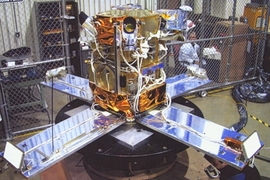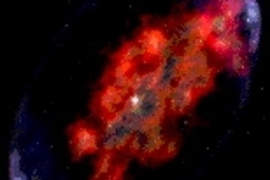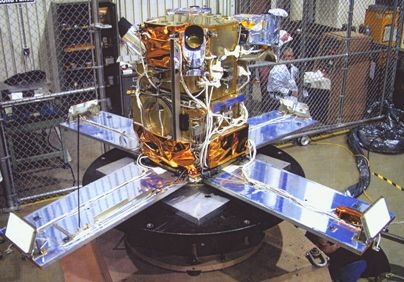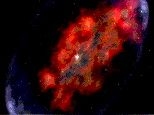Three recent powerful blasts from three wholly different regions in space have left scientists scrambling. The blasts, which were detected by an MIT team, might be early-alert systems for star explosions called supernovae, which could start appearing any day now. If this happens, as expected, scientists will have a tool to predict star explosions then watch them go off from start to finish.
The first two blasts, called X-ray flashes, occurred on Sept. 12 and 16. These were followed by a more powerful burst on Sept. 24 that seems to be on the cusp between an X-ray flash and a full-fledged gamma-ray burst, the most powerful explosion known other than the Big Bang.
A team led by MIT's George Ricker detected the explosions with NASA's High-Energy Transient Explorer (HETE-2). Science teams around the world using space- and ground-based observatories have joined in, torn and conflicted over which burst region to track most closely.
"Each burst has been beautiful," said Ricker, a senior research scientist at MIT's Center for Space Research. "Depending on how these evolve, they could support important theories about supernovae and gamma-ray bursts. These past two weeks have been like 'cock, fire, reload.' Nature keeps on delivering, and our HETE-2 satellite keeps on responding flawlessly."
Many gamma-ray bursts appear to be caused by the death of a massive star collapsing into a black hole. Others might be from merging black holes or neutron stars. In either case, the event likely produces twin, narrow jets in opposite directions, which carry off tremendous amounts of energy. If one of these jets points to Earth, we see this energy as a gamma-ray burst.
The lower-energy X-ray flashes might be gamma-ray bursts viewed slightly off angle from the jet direction, somewhat similar to how a flashlight is less blinding when viewed at an angle. The majority of light particles from X-ray flashes, called photons, are X-rays--energetic, but not quite as powerful as gamma rays. Both types of bursts last only a few milliseconds to about a minute. HETE-2 detects the bursts, studies their properties, and provides a location so that other observatories can study the burst afterglow in detail.
The trio of bursts from the past few weeks has the potential of settling two long-standing debates. Some scientists say that X-ray flashes are different beasts altogether, not related to gamma-ray bursts and massive star explosions. Detecting a supernova in the region where the X-ray flash appeared would refute that belief, instead confirming the connection between the two. Follow-up observations of the Sept. 24 burst, named GRB040924 for the date it was observed, are already solidifying the theory of a cosmic explosion continuum from X-ray flashes up through gamma-ray bursts.
More interesting for supernova hunters is the fact that X-ray flashes are closer to Earth than gamma-ray bursts are. While the connection between gamma-ray bursts and supernovae has been made, these supernovae are too distant to study in detail. X-ray flashes might be signals for supernovae that scientists can actually sink their teeth into and observe in detail. Yet for now, it is just watch and wait.
In addition to all of this, GRB040924 goes on record as generating the fastest response ever for a gamma-ray burst satellite. HETE-2 detected the burst and relayed information through the NASA-operated Gamma-ray Burst Coordinates Network in under 14 seconds, which led to an optical detection about 15 minutes later with the Palomar 60-inch telescope, just north of San Diego. Dr. Derek Fox of Caltech was the lead on this observation.
"We all expect much more of this type of exciting science to come after the launch of Swift," said Dr. Anne Kinney, director of NASA's Universe Division. Swift, to launch in October, contains three telescopes (gamma ray, X-ray and UV/optical) for quick burst detection, swift relay of information, and immediate follow-up observations of the afterglow.
The HETE spacecraft was built by MIT under the NASA Explorer Program, a collaboration among U.S. universities, Los Alamos National Laboratory, and scientists and organizations in Brazil, France, India, Italy and Japan.
At MIT, the HETE team includes Ricker, Geoffrey Crew, John Doty, Roland Vanderspek, Joel Villasenor, Nat Butler, Peter Csatorday, Gregory Prigozhin, Steve Kissel, Francois Martel, and Fred Miller.
Animation and additional information is available at http://www.gsfc.nasa.gov/topstory/2004/0930grb.html
and http://space.mit.edu/HETE.
A version of this article appeared in MIT Tech Talk on October 6, 2004 (download PDF).









